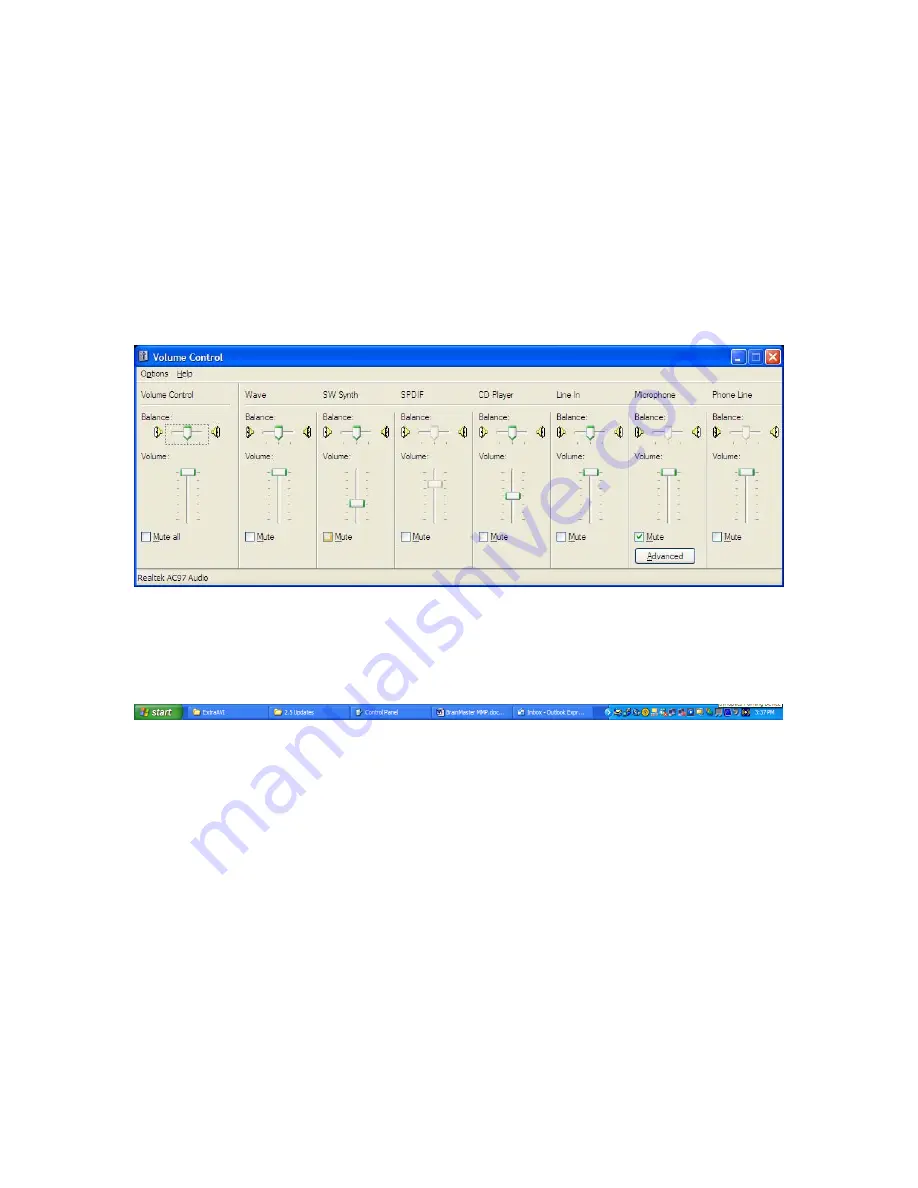
BrainMaster Multimedia Player (BMrMMP) User’s Manual
Windows Volume Control
If you do not hear the expected sounds, or if they sound too soft or too loud, use the Windows
Volume Control to inspect and/or adjust the settings. Your control may look like the following.
Note that the MMP interface uses more than one of these channels. If you use wav or mp3 files,
the “Wave” control will be in effect. If you play a CD, the “SW Synth” control will be in effect.
Make sure the volume control is turned sufficiently up, and that the needed channel is not on
“Mute”. Note that in some feedback situations, you can actually see the volume control being
moved up and down under the control of the MMP software. You can get to this control panel
either by using “My Computer/Control Panel/Sounds and Audio Devices/Volume”, although your
computer’s path may be different.
You may also see a small speaker icon on your Windows Toolbar, and use this to access the
volume control. The Control Panel gives you the ability to turn this icon on or off, so it may or
may not be visible on your PC task bar. This taskbar is shown with a volume control (speaker)
icon on lower right:
Multiple Sound Feedback Sources
Note that the MMP player will play any sounds that come built into your animations. Both avi
and mpeg files may contain their own sounds. The MMP player will play the sounds from your
animations. The sounds will stop and start with the animation. Therefore, the animation’s sounds
will come in a more discrete, on/off fashion. On the other hand, all other sounds you use (wav,
mp3, mid, CD) will be modulated in the slower loud/soft manner that was described above.
So if your animation files have their own sound, and you also use an additional sound file, you
will hear both sounds being played back. The animation’s sound will come in a stop/start
fashion, and the other one in a loud/soft fashion. For example, the “TwoDolphins with sound”
animation has water sounds accompanying the swimming movements. If this is used in addition
to a music file, then the trainee will hear coordinated water sounds along with the movement, plus
a music accompaniment that becomes louder or softer on a gradual basis. This provides three
separate, yet coordinated, feedback signals to guide the trainee in an intuitive and interesting
manner. You may have to use different volume controls in Windows to set them at the best
relative volume levels.
531-088 v. 1.3 7-10-07
Page 7 of 14














